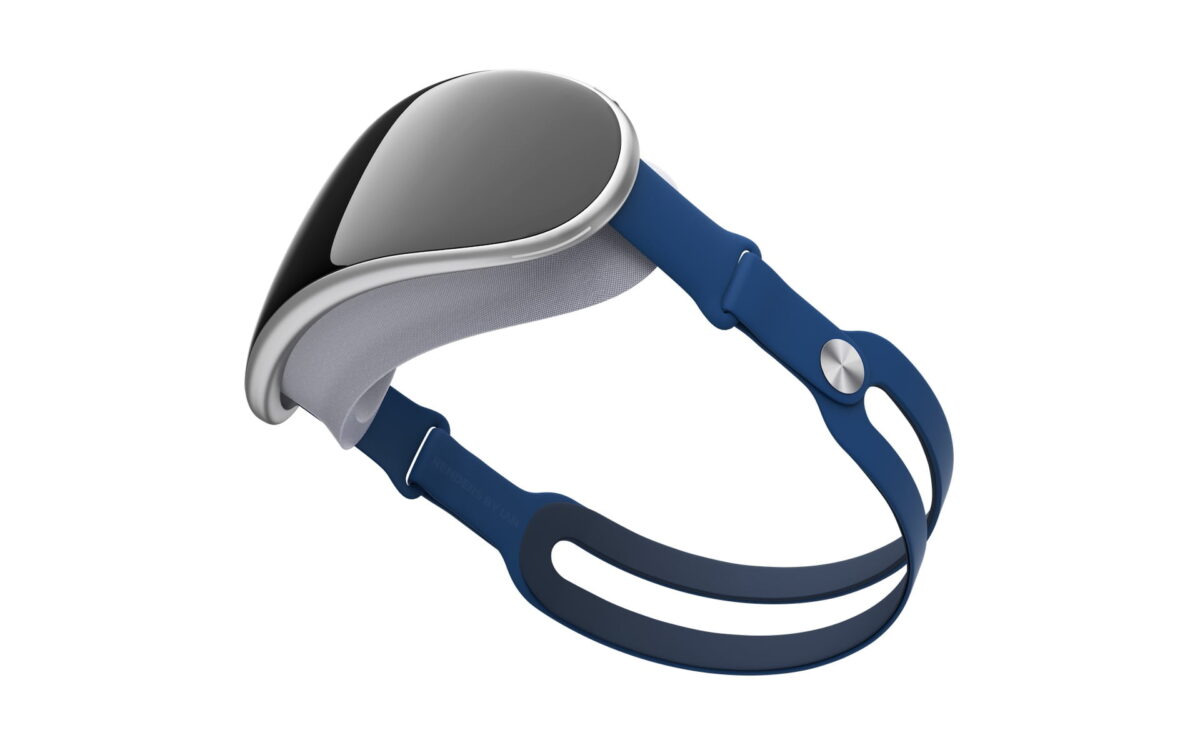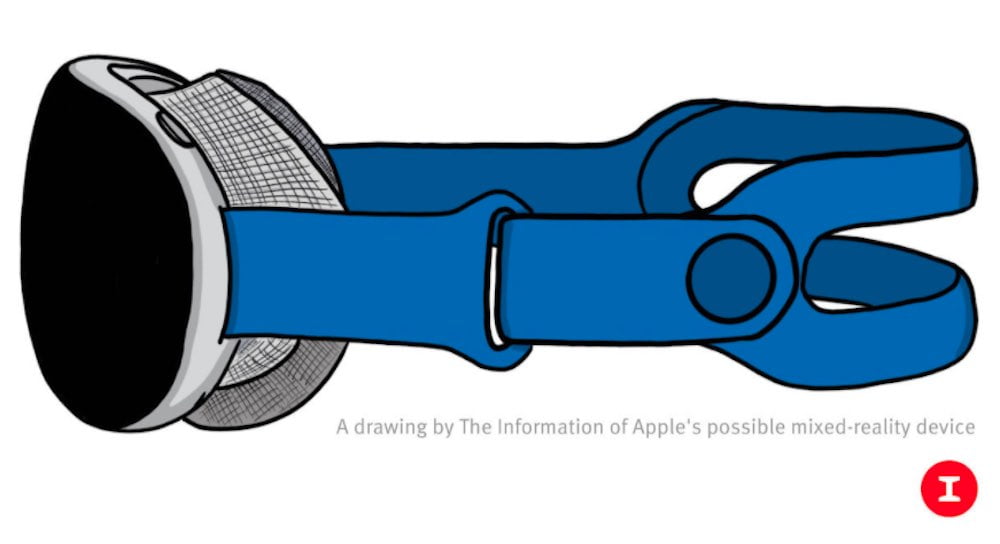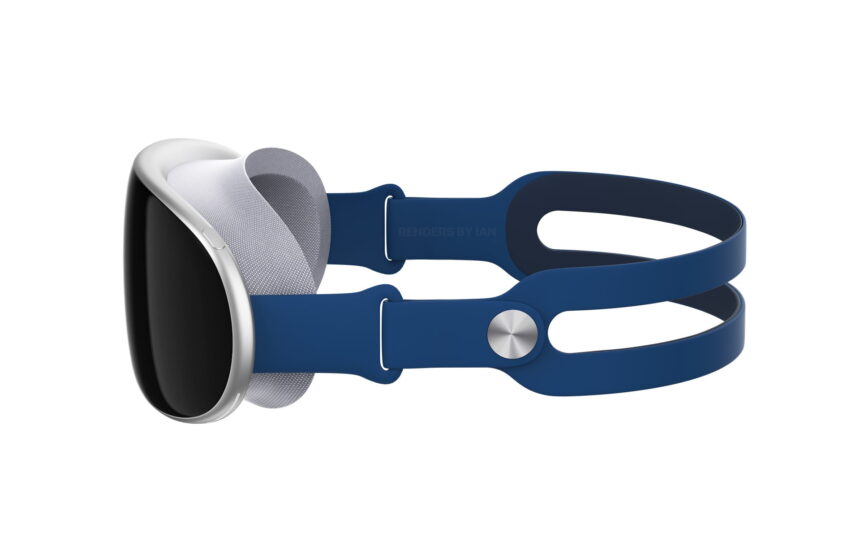Apple's XR headset: Everything we (might) know so far

February 27, 2024:
This article is outdated and is succeeded by our new Vision pro roundup article:
Apple Vision Pro: Price, specs, features & everything you need to know
The rumors about Apple's AR-focused VR headset continue to mount. We have compiled the most important information from insider reports and leaks.
Apple has been rumored to be entering the headset market for years. Despite numerous delays: the well-informed Apple leaker Mark Gurman is sure that 2023 will be the year of "Apple Reality".
So what do we know about Apple's Mixed Reality headset?
We have gathered all the information, rumours and leaks to bring you up to date.
Content
Background: Apple and augmented reality
Apple has reportedly been working on a Mixed Reality headset for more than seven years. The department responsible for development, the Technology Development Group, is said to have grown to more than 1,000 employees.
The headset was originally scheduled to be unveiled in 2019, but has been repeatedly delayed internally. For technical reasons, but also for other reasons: For Apple, the mixed reality headset would be the first major new product category since the Apple Watch in 2015.
If you want to delve deeper into the history of the XR headset, you can read the following articles about the long and complex development of the XR headset:
- A report traces the never-ending development of Apple's headset
- Apple headset has no gaming focus
Apple itself has not commented on the development of its headsets, although Tim Cook has repeatedly emphasized the potential of augmented reality.
The company's most significant AR product to date is software-based: it's called ARKit and was introduced in 2017. It enables augmented reality with the iPhone and iPad.
Mobile AR lacks in immersion and is impractical because you have to hold the display in your hand, limiting the use cases and mainstream potential of the technology.
With sleek yet powerful AR glasses not yet technically feasible, tech companies have turned to the development of mixed reality headsets as a viable interim solution. These include Meta, HTC, Samsung, and Apple, among others.
What is Apple’s mixed reality headset called?
According to trademark filings, the new product category could go by the name Apple Reality.
The first, high-priced mixed reality headset could be called Apple Reality Pro, followed by a more affordable second-generation device called Apple Reality One.
The technology behind Apple’s mixed reality headset.
There have been numerous leaks, rumors, and speculations about Apple's first mixed reality headset, some of which go back years. As usual, our sources are listed at the end of the article.
Because the following information is unconfirmed, it should be taken with a grain of salt. Apple may have multiple prototypes in development and may change, remove, or even add technical features that are not yet known. The product could also be canceled at the last minute.
Display & Optics
The headset features internal and external displays.
The inner screens are two micro-OLED displays made by Sony, each with 4K resolution. Small motors in the housing automatically adjust the lenses to the user's IPD. The field of view is 120 degrees. Individual corrective lenses can be inserted if desired.
The outer display is designed to show the user's facial expressions (see Meta's research for comparison), among other things. The intention is to reduce the isolation users might feel when wearing the device.
Processors
Apple's headset is primarily powered by two chips. At the heart of the device is an SoC based on Apple's M2 processor (codenamed Staten).
Another chip, codenamed Bora, is responsible for the passthrough processing and digital reconstruction of the physical environment.
Since the latency between the physical world and the digital passthrough view was still noticeable, Apple developed a third processor to speed up communication between the two chips.
Camera and sensors
The mixed reality headset has more than a dozen cameras integrated, which capture pupil movements, facial expressions and even the legs of the users for body tracking.
Eye-Tracking is used for more realistic avatars, a rendering technique called foveated rendering (reduce rendering workload by significantly reducing image quality in peripheral vision, e.g. Playstation VR 2 uses this technique) and iris scanning for online payments and faster logging into the device.
The headset also has LIDAR scanners built in to scan the environment for mixed reality use cases.
Head mount and audio
Apple has developed different head mounts: one for developers, one for consumers.
The latter has built-in speakers and is made of a synthetic rubber material similar to that of the Apple Watch wristbands.
Apple will forgo audio ports. Instead, you will be able to connect Airpods Max or Airpods Pro of the second generation. A chip inside these devices ensures that latency remains low, unlike Bluetooth earbuds from other manufacturers.
Battery
The battery is not built into the case or the head mount. Instead, it is worn on the hip. The battery and headset are connected by a cable.
This solution, favored by Apple's former chief designer Jony Ive, reduces the weight of the device and allows to swap batteries, which are supposed to last for about two hours at a time. Since Ive has not been consulting Apple for quite some time, Apple might have abandoned this design, writes The Information.
Design and input
The headset is made of aluminum and glass, as well as carbon fiber, to reduce the size and weight of the device. This makes the device lighter and thinner than comparable headsets. The cameras and sensors are hidden as much as possible for aesthetic reasons.
On the right side is a dial that allows users to quickly switch between the virtual and physical world.
The Information was unable to determine which input method Apple will use. The company is experimenting with a variety of interfaces, from more natural inputs like eye tracking, hand tracking and voice control to a thimble-like wearable. The site says it is unlikely that a dedicated gaming controller is planned, at least for launch.
Operating system and software
Apple is developing its own operating system for the headset, which trademark applications suggest could be called xrOS.
Experts expect it to be fully integrated into Apple's ecosystem (hardware and software), with access to basic iOS features and Apple's own productivity apps.
Reportedly, Apple sees VR conferencing with avatars as a potential killer app. In addition, Apple is working with Hollywood producers on content and could be planning immersive livestreaming of events.
Will Apple’s mixed reality headset be standalone?
That depends on whether Apple integrates the battery into the headset.
According to Apple leaker Mark Gurman, you probably won't need an iPhone to set up and use the device. It was different with the first Apple Watch.
What does Apple’s mixed reality headset look like?
The size, shape, and weight of the headset are described differently depending on the source.
The Information claims to have seen images of an advanced prototype from 2020, describing the device as "a sleek, curved visor". The site has made a drawing of the prototype based on the images.
3D product designer Ian Zelbo later made professional renderings of the headset based on this drawing.
We don't know if the current prototypes and the planned final product actually look like this.

The drawing. | Image: The Information

The concept rendering of Ian Zelbo. | Ian Zelbo
How much will Apple’s mixed reality headset cost?
Current estimates suggest that the XR headset could cost between $2,000 and $3,000, or even more depending on the configuration, due to the high quality and expensive components such as the displays.
Apple is reportedly working on a cheaper successor, which could be called the Apple Reality One and be released in 2024 at the earliest.
Who is Apple’s mixed reality headset aimed at?
A mixed reality headset would go against much of what defines Apple: It would be neither fashionable nor mass-market.
For Apple, the headset would likely be an interim solution on the way to AR glasses. Apple will probably market the device as a developer kit. Developers could use it to experiment with VR and AR, and create potential killer apps for Apple's mixed reality ecosystem.
Another possible target group are companies, institutions and professional users who could use the mixed reality headset for 3D visualization, educational purposes and all kinds of spatial design (products, architecture).
Presumably, Apple itself does not really know where the journey will lead. It seems important for the company to have a product in its portfolio that can compete with Meta's hardware if Mark Zuckerberg's prediction comes true and augmented reality becomes the next big computing platform after the smartphone.
When will Apple’s mixed reality headset be unveiled?
Only Apple knows. The mixed reality headset was originally planned for 2019, then 2022, and has been delayed several times in the last year alone.
Apple leaker Mark Gurman is nevertheless sure: 2023 will be the year of Apple Reality.
According to his latest report, it could be unveiled in June at WWDC 2023.
Where can I get the latest Apple headset rumors?
MIXED regularly covers the latest Apple headset rumors.
You can get more information here:
- Power On with Mark Gurman: (newsletter about Apple leaks, published every Sunday)
- Ming-Chi Kuo (Twitter account of a supply chain analyst with a good track record in predicting Apple's next moves)
- The Information (website with numerous leaks about Apple and other tech companies)
Note: Links to online stores in articles can be so-called affiliate links. If you buy through this link, MIXED receives a commission from the provider. For you the price does not change.